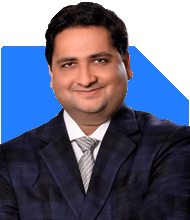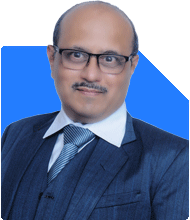I am 37 year old and lives in pune. I have 4 years child and my parent are depends on me. I earn 1lack monthly. I bought flat in 2020 here is my expenses.
25 k HOUSE EMI, 20K SIP, 15K BC, and 10k pocket money to my parent .They prefer tobstay at village. 10k Grocery and household chores expenses to pune home.
I incurred 3 to 5k miscellaneous expenses.
I couldn't save emergency fund yet and i end up with 0 saving. I am tied up with my daily work monday to frieday. I am looking for extra income over the weekend. No success yet.
Please guide me, How will i upliftvmy financial conditions.
Ans: You're trying your best. That is the first step. Let’s now move forward with a structured plan to uplift your financial health.
Below is a full assessment with action steps.
1. Understand Your Current Financial Flow
Your income is Rs. 1,00,000 per month. That is a strong start.
Your fixed obligations are:
• Rs. 25,000 – House EMI
• Rs. 20,000 – SIP investments
• Rs. 15,000 – BC (chit fund)
• Rs. 10,000 – Parents’ support
• Rs. 10,000 – Grocery and chores
• Rs. 3,000 to 5,000 – Miscellaneous
You are left with almost nothing. That needs fixing urgently.
2. Respect Your Existing Efforts
You have no unnecessary spending. That is rare and praiseworthy.
Supporting parents and a child along with EMIs shows responsibility.
SIPs of Rs. 20,000 monthly reflect high financial discipline.
Your commitment is strong. You only need better structure.
3. Plug The Leaks
Review the Rs. 15,000 chit fund contribution.
• Is it giving real, dependable returns?
• Chit funds are risky and illiquid.
• You may reduce or stop this temporarily.
• Reallocate some amount to build emergency fund.
Track your miscellaneous expenses closely.
• Rs. 3,000 to 5,000 is a wide range.
• Write down every rupee spent for 30 days.
• You will find avoidable leaks.
Pocket money to parents is noble.
• Can you reduce to Rs. 8,000 temporarily?
• Discuss openly with them. They may understand.
4. Emergency Fund – Absolute Priority
You have none right now. That is risky.
Start with just Rs. 2,000 a month for it.
Slowly raise it to Rs. 5,000 monthly.
Keep it in liquid mutual funds or sweep-in FD.
Target 6 months of expenses saved.
5. SIP – Continue but Optimise
Rs. 20,000 SIP is excellent, but over-stretching.
Consider trimming SIP to Rs. 15,000 temporarily.
Maintain funds with good track record.
Prefer actively managed funds, not index funds.
Index funds look cheap but are not guided.
Actively managed funds have expert fund managers.
They adapt better to market changes.
Also, invest via regular plans through CFP-guided MFD.
Direct funds may look low-cost but lack advice.
A Certified Financial Planner ensures alignment with your goals.
You avoid wrong fund selection or untimely exit.
6. Weekend Income Ideas – Realistic Steps
You are already working hard Monday to Friday.
Choose light, flexible weekend work only.
Here are some options:
• Online tutoring for school subjects.
• Content writing or blog summarising.
• Paid online surveys or transcription.
• Voice-over for regional content.
• Teach spoken English to kids or adults.
• Freelance admin or data entry work.
Avoid any scheme asking for upfront money.
Start small. Give 2 hours only per weekend.
Add more hours only if manageable.
Target Rs. 3,000 to Rs. 5,000 monthly extra.
7. Insurance and Protection – Check Now
Term insurance is must if not yet taken.
Cover should be 15-20 times your salary.
Don’t mix insurance with investment.
Avoid ULIPs, endowments, money-back plans.
Use pure term plan only.
Health insurance of minimum Rs. 5 lakhs is needed.
Include parents if not yet covered.
Hospital expenses can kill savings quickly.
8. Plan for the Child – Be Early
Your child is 4 now. Good time to start.
Start SIPs for child’s higher education.
Even Rs. 2,000 per month is good now.
Increase slowly every year.
Avoid child ULIP plans. Go for mutual funds.
9. Your Own Retirement – Don’t Delay
Retirement seems far, but planning should begin now.
SIPs can be split for retirement and child’s needs.
Build long-term funds that grow steadily.
Rebalance your portfolio every year with CFP help.
10. Emotional Strength – Vital But Ignored
You are handling work, parents, child, and finances.
That is a lot for anyone.
Take short breaks every week for yourself.
Even 20 minutes daily silence helps mental health.
A peaceful mind will bring better decisions.
11. Set a Weekly Routine for Financial Planning
Pick Sunday morning or evening.
Spend 30 minutes reviewing all money matters.
Note down income, expenses, targets.
Involve your spouse if possible.
Use mobile apps to track your spendings.
This habit can change your financial life.
12. Annual Review – Mandatory Every Year
Every January or April, review full picture.
Assess how much saved, invested, and grown.
Take help of a Certified Financial Planner.
He/she will guide on rebalancing and tax planning.
Realigning yearly avoids long-term mistakes.
13. Tax Planning – Use All Legal Benefits
Check if you are using Sec 80C fully.
Also use 80D for medical insurance premium.
Avoid investing just to save tax.
Make all investments with goal alignment.
14. Goal Chart – Must Prepare One
Note all goals: emergency fund, education, retirement.
Put value and time period for each goal.
Split current SIPs based on goal priority.
Keep one SIP for each long-term goal.
15. Think 10 Years Ahead – Not Just This Month
What you save today grows 5 times in 10 years.
Even Rs. 5,000 monthly invested well makes big difference.
Short pain gives long comfort.
16. Be Open to Guidance
You don’t need to do this alone.
Take help from Certified Financial Planner.
Avoid friends’ or relatives’ advice.
Stay committed to your own plan.
17. Use Your Weekends as “Wealth-End”
2 hours of extra income on weekends is enough.
But use Sunday evening for reviewing your finances.
18. Social Pressure – Say “No” with Pride
Avoid unnecessary functions, gifts, status spendings.
True peace comes from inner stability, not others’ praise.
19. Focus Areas for You Now
Cut back chit fund, SIP, parent support slightly.
Build emergency fund first.
Earn Rs. 3,000 extra from weekends.
Stay focused for 6 months. Results will follow.
Finally
Your income is decent. Your intentions are pure.
You are already doing 50% right.
You only need to redirect and prioritise better.
Build emergency fund. Reduce pressure on yourself.
Give yourself 1 year to rebuild. Not 1 month.
Stay away from shortcuts. No trading. No gambling.
Let your money grow steadily and peacefully.
You are already on the right track. Just fine-tune.
Stay committed. Your future self will thank you.
Best Regards,
K. Ramalingam, MBA, CFP,
Chief Financial Planner,
www.holisticinvestment.in
https://www.youtube.com/@HolisticInvestment


























